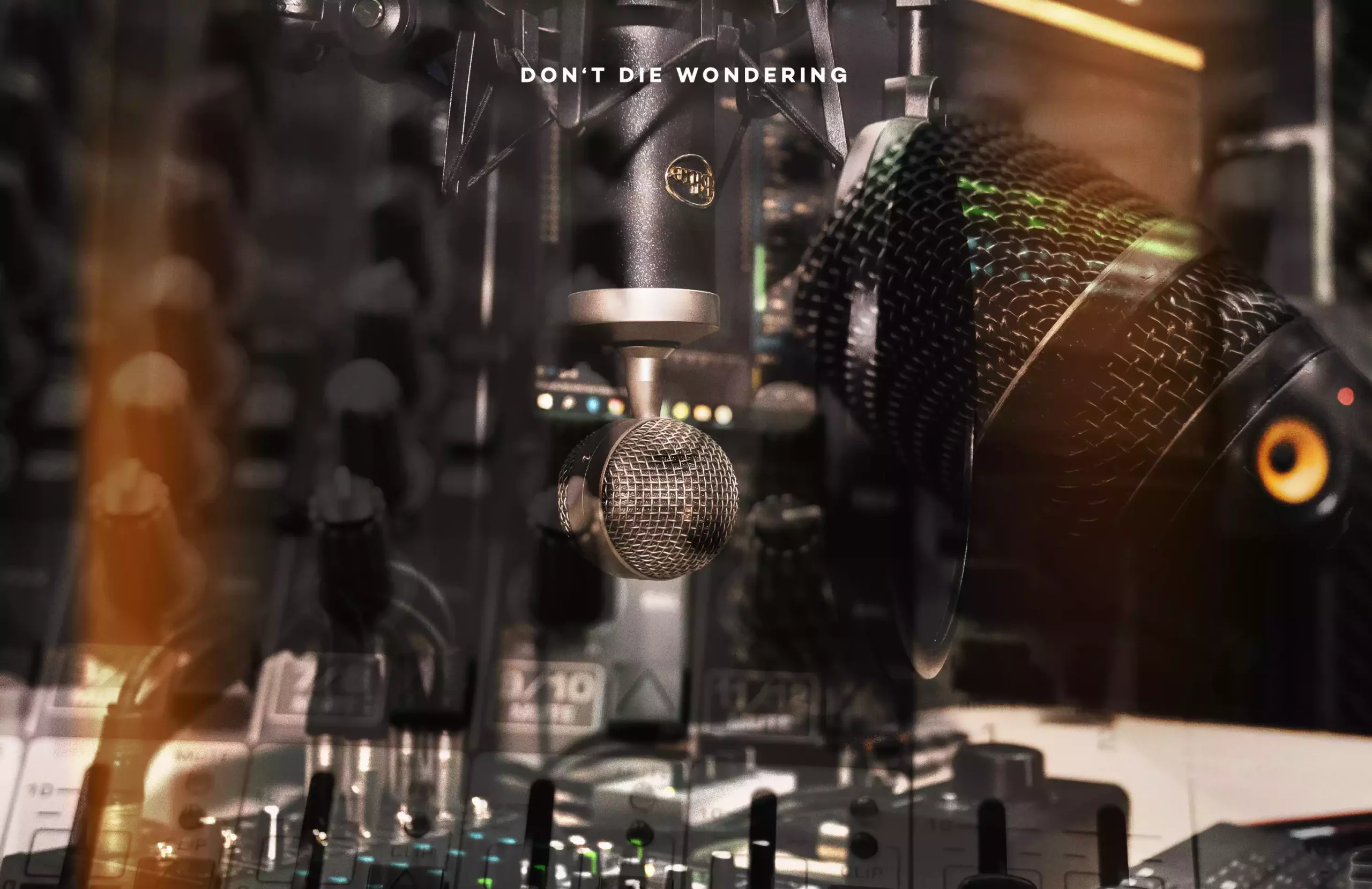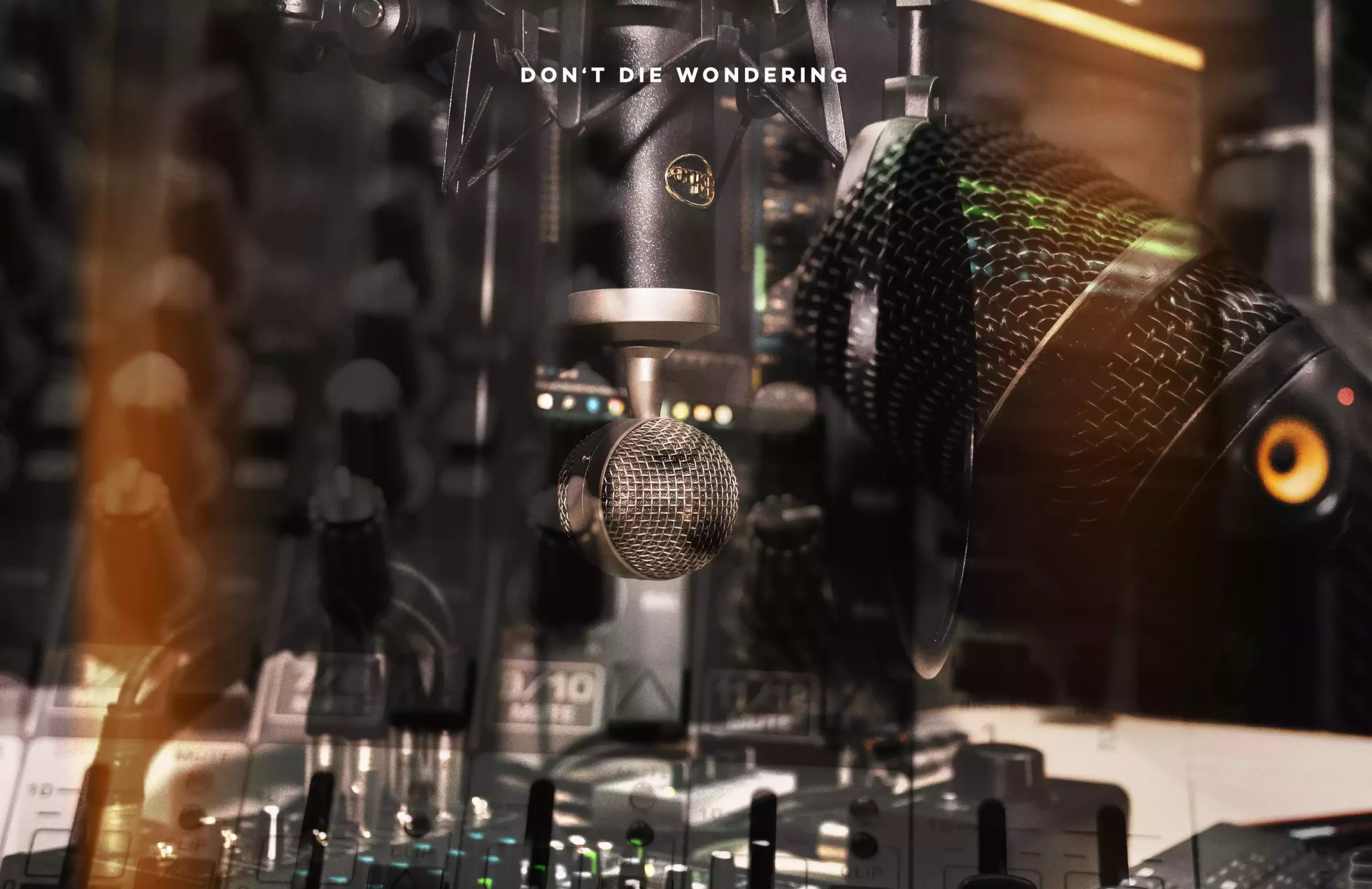All the ins and outs of figuring out your tech, skills and post-production in the world of podcasting.
Let’s set the scene – you’ve had a fantastic idea for a new podcast and have recorded a pilot episode together with a friend. Now you have decided to post the finished video to YouTube for some feedback, and are eagerly awaiting the first wave of comments, likes, and opinions. It all seems to be working out perfectly… or at least, you thought it was. Your comments section quickly fills up with complaints about the sound levels, not being able to understand speech, and even people suggesting that you add some music in the background. You need to upgrade your podcasting.

The technical side of podcasting can be a minefield for those who have never done any creative work on a computer before. It’s vital that you take the time to learn this part of your craft; some of your listeners are sure to be listening to your podcast in audio only, so getting the audio track right becomes crucial to your success.
Step 1: Equipment
Unfortunately, the microphones built into laptops and smartphones just aren’t up to the job of creating a high quality, extended length vocal recording. Using a good microphone is only part of the story, of course – you’ll need to ensure that the editing and post-production is up to scratch as well. You need to spend money to make money, as the saying goes, and if you want people to listen to you for an hour or more on your podcast then you are going to need to invest in some basic equipment.
The first step is to work out how much you can afford to spend, but don’t worry if you haven’t got much money at this early stage. Even the cheapest professional equipment will be a huge improvement over simply recording yourself using a laptop or smartphone. The majority of your budget should be spent on a high-quality microphone, but it’s worth putting a little aside for some accessories too.
A microphone suspension boom will make your life a lot easier, but it isn’t essential; a pop filter, on the other hand, should be considered a must for a long-form audio recording such as a podcast. A good pair of headphones should also be on top of your lis, a must-buy, as these will enable you to monitor the levels and quality of your audio track in real-time as well as being incredibly useful for post-production.
About that pop filter – this is the “shield” that you will often see positioned in front of people’s microphones when watching podcasts – and acts to suppress the irritating “pop” that often accompanies letters such as “p” or “b”. Again, whilst this item is not essential in the early stages, you may well get a few frustrated comments from listeners if you do not purchase one – especially from those who are listening in via headphones.
Finally, if you are planning to post your podcast to video sharing sites then investing in a high-quality camera will enable you to create much more professional results than simply sharing a static screen for the duration of your podcast.
However, if you are not ready to purchase such equipment upfront, that’s perfectly fine. Many companies offers podcast and video studio for rent, providing you with access to professional-grade tools without the need for a large initial investment. Renting a studio can also give you the opportunity to experiment with different setups and find what works best for your needs before committing to your own equipment.

Step 2: Editing Software
Purchasing equipment might well put a hole in your bank balance, but at least it doesn’t require a great deal of thought! The editing process, on the other hand, is something that could take you months – or even years – to master. Audio editing software tends to be a little easier to use in comparison to full on video editing packages, but you may need to learn both if you intend to distribute your podcast in video format.
You can find plenty of great tutorials online for video editing software such as Magix Vegas, Adobe Premiere, or Final Cut Pro, but which one is right for you may well depend on your budget. There are lots of free alternatives to these professional tools too, and if you find you can create acceptable results using one of those then there’s no reason not to save your money until you have built a foundation subscriber base.
On the audio side of things, Audacity is a free sound editing application that is available for both PC and Mac. It isn’t the easiest program to use, especially if you haven’t tried editing audio for podcasting before, but thankfully there are lots of free tutorials available online. If you want to splash out on the best, you may want to consider a paid application such as Steinberg’s WaveLab, Adobe Audition, or Magix Sound Forge.

Step 3: Post-Production
After you have familiarized yourself with your new hardware and software, you’ll no doubt be eager to get started recording a new, high-quality version of your first podcast. Your new editing software will enable you to balance out the levels over the duration of your recording to ensure that you, your co-host, guests, and any music and sound effects are all playing at the same volume. If you made any mistakes during recording, then this is the time when you can remove those – just be sure to watch the entire show back before distribution to ensure you haven’t missed anything!
The next step is to spice up your show with an intro and outro to give it a more professional feel. A short yet unique and catchy intro will make your podcast much more memorable – remember, it’s vital to catch your viewers interest right away if you don’t want them to skip to the next show before you have even got started. Sites such as Fiverr enable you to hire creative workers for small jobs such as creating introduction music and video, or you could try a royalty free music site such as MotionArray.
If you want to make podcasting a full-time pursuit, then you’ll need to go much further than this short introduction to the technical side of podcasting. There’s lots to learn, but that’s a small price to pay if the result is that you can earn a living doing something that you enjoy. Good luck!


